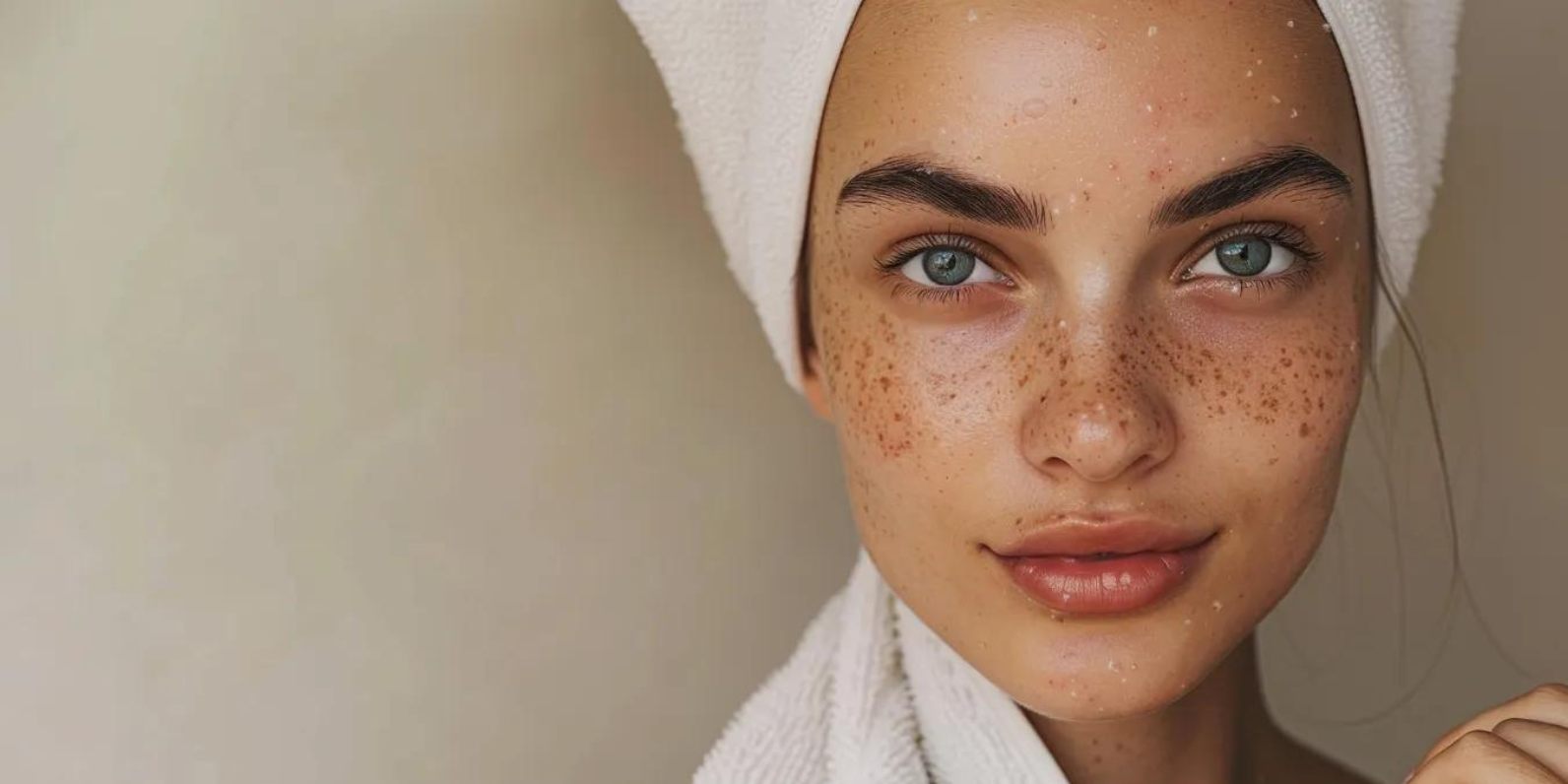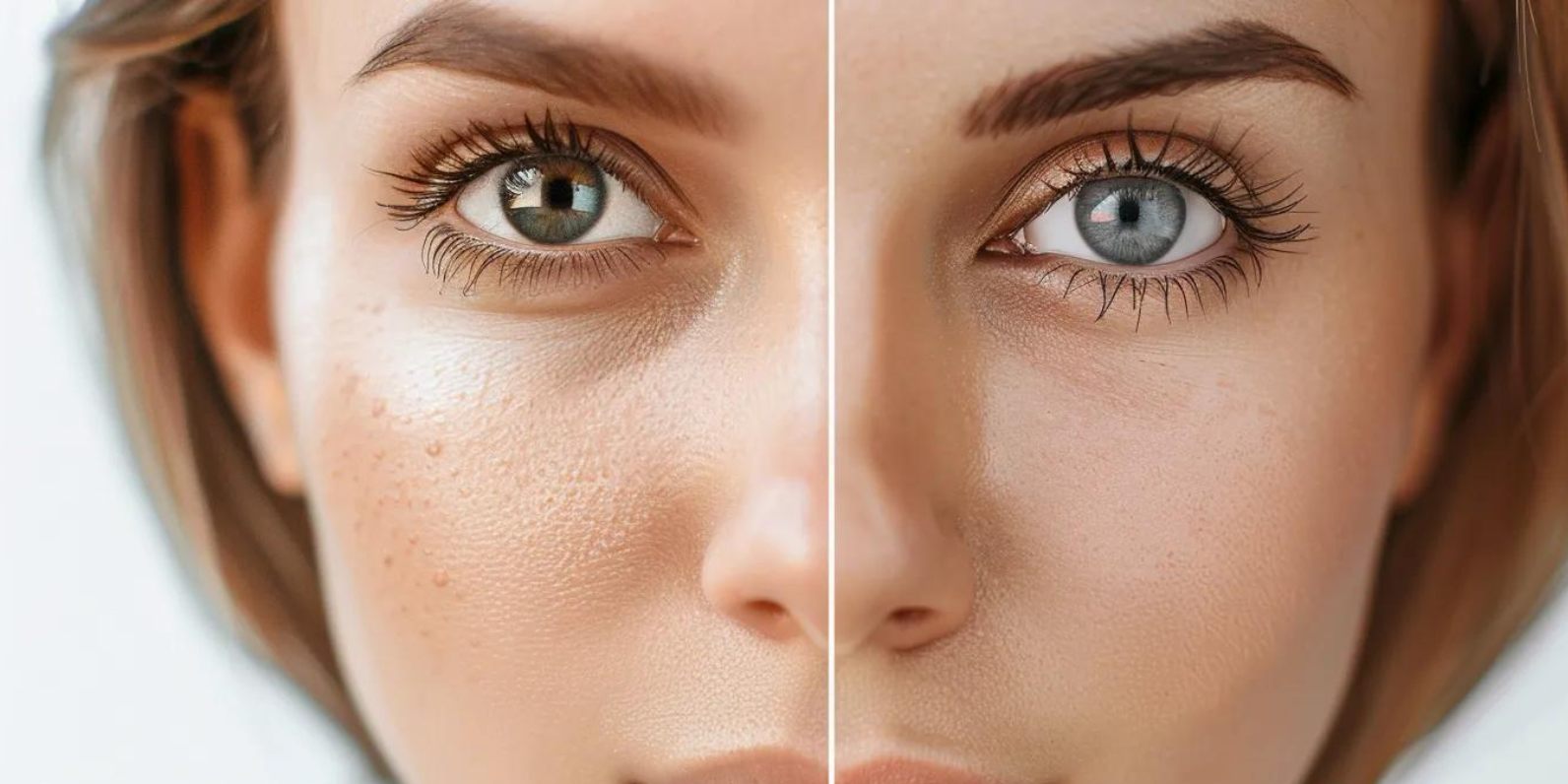Laser treatments reduce acne scars by using focused light beams to remove damaged skin and stimulate collagen production. The procedure improves skin texture, fades dark spots, and creates smoother appearance over multiple sessions.
Acne scars affect 47% of people who experience acne breakouts. These marks form when inflammation damages skin tissue during healing. Laser technology offers proven solutions by targeting scar tissue and promoting new cell growth.
What Are Acne Scars?
Acne scars are permanent skin changes caused by inflammatory acne lesions that damage collagen during the healing process. Deep pimples trigger irregular collagen production, creating depressions or raised areas on skin surface.
Types of Acne Scars
Ice Pick Scars: Deep, narrow indentations measuring less than 2mm wide
Boxcar Scars: Round or oval depressions with defined vertical edges, ranging 1.5-4mm wide
Rolling Scars: Wide depressions up to 5mm diameter with sloped edges
Hypertrophic Scars: Raised, thickened areas from excess collagen
Research shows ice pick scars comprise 60-70% of atrophic scars, boxcar scars account for 20-30%, and rolling scars represent 15-25% of cases.
Risk Factors for Scar Formation
Men develop acne scars 1.58 times more often than women. Severe acne increases scarring risk 5.51 times compared to mild cases. Family history of acne scars raises risk 2.73 times.
How Do Laser Treatments Work on Acne Scars?
Laser treatments use concentrated light energy to remove damaged skin layers and trigger collagen synthesis in deeper tissue. The thermal effect creates controlled wounds that activate the body’s healing response.
Mechanism of Action
Light penetrates skin at specific wavelengths. Heat removes the outer damaged layer where scars exist. Deeper tissue receives thermal energy that stimulates fibroblasts to produce new collagen. Blood vessels in treated areas constrict, reducing redness and inflammation.
The process creates three main effects:
- Removes scarred surface tissue
- Stimulates collagen production in dermis
Healing Timeline
New collagen forms gradually over 3-6 months post-treatment. Skin texture continues improving as collagen remodels scar architecture. Maximum results appear 6 months after final session.
What Types of Lasers Treat Acne Scars?
Four main laser categories treat acne scars: ablative resurfacing lasers, non-ablative fractional lasers, intense pulsed light systems, and picosecond lasers. Each type targets different scar characteristics and skin concerns.
Ablative Lasers
CO2 Laser: Vaporizes tissue layer by layer using high-energy carbon dioxide wavelengths. Recovery requires 3-10 days. Improvement scores average 6.0 out of 10 in clinical studies.
Erbium YAG Laser: Removes tissue with less thermal damage than CO2. Produces less erythema and pigmentation. Clinical improvement scores average 5.8 out of 10.
Non-Ablative Lasers
Fractional Lasers: Create microscopic treatment columns while preserving surrounding tissue. Require 3-6 sessions spaced 4-6 weeks apart. Clinical improvement scores average 5.2 out of 10.
Nd:YAG Laser: Penetrates deep without surface ablation. Causes minimal downtime. Requires 5-6 treatments for optimal results.
IPL and BBL Systems
Intense pulsed light targets pigmentation and redness. Does not improve textural scars. Treats post-inflammatory hyperpigmentation and erythema effectively. Requires 4-6 sessions.
Picosecond Lasers
Ultra-short pulses break up pigment and scar tissue. Works effectively on darker skin tones (Fitzpatrick types III-VI). Reduces hyperpigmentation risk compared to traditional lasers.
What Benefits Do Laser Treatments Provide?
Laser treatments offer six primary benefits: smoother texture, improved pigmentation, increased collagen, long-term results, versatility for multiple scar types, and minimal recovery time.
Texture Improvement
Ablative lasers reduce scar depth by 50-70% according to clinical trials. Fractional treatments show significant improvement after 3 consecutive sessions. Surface irregularities diminish as new collagen fills depressions.
Pigmentation Correction
Light-based treatments fade post-inflammatory hyperpigmentation. Red marks (erythema) respond to specific wavelengths. Skin tone becomes more uniform across treated areas.
Collagen Stimulation
Thermal energy activates fibroblasts in the dermis. New collagen production continues for 3-6 months post-treatment. Increased collagen density improves skin firmness and elasticity.
Psychological Benefits
Studies show acne scars significantly impact quality of life scores. Treatment reduces anxiety and depression markers. Patients report improved confidence and social engagement post-procedure.
What Happens During Laser Treatment?
Laser treatment involves consultation, preparation, the procedure itself, and post-treatment care spanning 20-40 minutes per session.
Pre-Treatment Consultation
Board-certified dermatologists assess scar type, skin tone (Fitzpatrick classification), and medical history. Contraindications include active acne, pregnancy, photosensitive medications, and recent sun exposure.
Treatment Process
Providers cleanse the treatment area and apply topical anesthetic. The laser handpiece delivers controlled pulses to targeted zones. Patients experience rubber band snapping sensations and warmth. Cooling devices minimize discomfort during ablative procedures.
Post-Treatment Protocol
Redness persists 2-10 days depending on laser intensity. Swelling subsides within 48-72 hours. Providers prescribe gentle cleansers, moisturizers, and broad-spectrum SPF 30+ sunscreen. Sun protection continues for 6-8 weeks minimum.
How Many Sessions Are Required?
Treatment quantity depends on laser type and scar severity, ranging from 1-6 sessions.
Ablative lasers (CO2, Erbium YAG) require 1-2 sessions. Non-ablative fractional lasers need 3-6 treatments. IPL and BBL systems require 4-6 sessions. Sessions space 4-6 weeks apart for optimal collagen remodeling.
Deep ice pick scars need more sessions than shallow boxcar scars. Skin type affects treatment intensity and frequency. Darker skin tones (Fitzpatrick IV-VI) require modified protocols to prevent hyperpigmentation.
What Does Laser Treatment Cost?
Laser acne scar treatment costs range from $300-$2,500 per session, with most procedures totaling $1,100-$2,000 per treatment.
Cost Factors
Laser Type: Ablative procedures average $2,000 per session. Non-ablative treatments average $1,100 per session. Picosecond lasers start at $300 per session.
Treatment Area Size: Full face costs more than isolated cheek or forehead zones.
Geographic Location: Urban medical centers charge premium rates. Rural clinics offer lower pricing.
Provider Credentials: Board-certified dermatologists and plastic surgeons command higher fees than medical aestheticians.
Insurance Coverage
Health insurance classifies acne scar treatment as cosmetic. Policies exclude coverage for aesthetic procedures. Patients pay out-of-pocket expenses. Some clinics offer payment plans for procedures exceeding $200.
FACE Skincare Medical Wellness provides advanced laser skin treatments in Michigan.
Who Qualifies for Laser Treatment?
Ideal candidates have atrophic scars, realistic expectations, no active acne, and Fitzpatrick skin types I-III for ablative lasers.
Suitable Candidates
- Patients with ice pick, boxcar, or rolling scars
- Individuals with post-inflammatory hyperpigmentation
- People who maintain consistent skincare routines
Contraindications
Active acne requires treatment before laser procedures. Darker skin tones (Fitzpatrick IV-VI) need specialized protocols. Pregnant or nursing women must postpone treatment. Photosensitive medications increase complication risks.
What Risks Exist?
Common side effects include erythema, edema, and temporary discomfort lasting hours to days. Rare complications include hyperpigmentation, infection, and scarring occurring in less than 5% of cases.
Managing Side Effects
Apply cold compresses for swelling. Use prescribed topical antibiotics to prevent infection. Avoid sun exposure for 6-8 weeks. Contact providers immediately for excessive pain, pus, or fever above 100.4°F.
Risk factors increase with:
- Inexperienced operators
- Incorrect laser settings
- Poor post-treatment care
How Do Lasers Compare to Alternatives?
Laser treatments provide faster, more significant results than topical products, chemical peels, or microneedling for moderate to severe scars.
Treatment Comparison
Topical Retinoids: Improve mild scars over 6-12 months. Cost $20-100 per month. Require daily application.
Chemical Peels: Cost $400 per session. Treat superficial scars. Need 4-6 treatments for visible improvement.
Microneedling: Costs $200-700 per session. Stimulates collagen through mechanical injury. Requires 4-6 treatments spaced monthly.
Subcision: Surgical technique breaks fibrous bands under rolling scars. Often combined with lasers for enhanced results.
Combination Therapy
Providers often combine treatments:
- Subcision followed by fractional laser
- PRP with microneedling
- Chemical peels before laser resurfacing
Learn more about texture scar treatments that combine multiple modalities.
How Can Results Be Maintained?
Post-treatment maintenance requires daily SPF 30+ sunscreen, gentle skincare products, and preventing new acne formation.
Essential Maintenance Steps
Apply broad-spectrum sunscreen every 2 hours during sun exposure. Use retinol or vitamin C serums to support collagen. Treat active acne promptly with acne treatments to prevent new scars.
Long-Term Care
Hydrate skin with ceramide-based moisturizers. Avoid picking or squeezing blemishes. Consider maintenance treatments annually. Schedule follow-up consultations every 6 months.
What Success Rates Exist?
Clinical studies show 50-70% improvement in scar appearance after laser treatment series. Patient satisfaction rates exceed 80% across multiple studies.
Evidence-Based Outcomes
CO2 and Erbium YAG lasers achieve mean improvement scores of 6.0 and 5.8 out of 10. Ablative fractional lasers produce comparable results with shorter recovery. Three consecutive fractional treatments equal one ablative session in efficacy.
Results vary by scar type. Ice pick scars respond less favorably than boxcar or rolling scars. Provider experience significantly impacts outcomes.
How to Choose a Provider?
Select board-certified dermatologists or plastic surgeons with specific laser training and documented experience treating your scar type.
Selection Criteria
- Board certification in dermatology or plastic surgery
- Minimum 2 years laser treatment experience
- Before-and-after portfolio of similar cases
- Modern, FDA-cleared laser equipment
Important Questions
What laser do you recommend for my specific scars? How many similar cases have you treated? What realistic improvement can I expect? What complications have you encountered? What happens if results disappoint?
What Complementary Treatments Help?
Combining subcision, PRP, chemical peels, fillers, or radiofrequency with laser treatments enhances overall outcomes.
Synergistic Options
Subcision: Breaks fibrous tethering under rolling scars. Performed before laser sessions for better penetration.
PRP: Platelet-rich plasma accelerates healing. Applied during microneedling or after laser treatment.
Fillers: Temporary hyaluronic acid fills deep atrophic scars. Used with laser resurfacing for severe cases.
Radiofrequency: Thermal energy tightens skin. Combined with fractional lasers in advanced procedures.
What Does Research Show About Emotional Impact?
Acne scars significantly reduce quality of life scores, causing social anxiety, depression, and low self-esteem in affected individuals. Treatment improves psychological well-being and social confidence.
Quality of Life Studies
Research involving 723 adults with facial acne scars shows mean Dermatology Life Quality Index scores of 6.26. Patients report embarrassment, fear of photography, and avoidance of social activities. Treatment reduces these psychological burdens.
Post-treatment surveys show increased confidence, improved social engagement, and reduced appearance-related anxiety.
What New Technologies Exist?
Recent advances include picosecond lasers, hybrid fractional systems, and AI-powered treatment planning that improve outcomes while reducing risks.
Recent Innovations
Picosecond lasers deliver ultra-short pulses for faster treatment and less thermal damage. Hybrid fractional systems combine ablative and non-ablative wavelengths in single sessions. Smart laser systems auto-adjust parameters based on real-time tissue feedback.
These technologies reduce downtime, minimize complications, and improve results for darker skin tones.
What Common Misconceptions Exist?
Five myths about laser acne scar treatment include complete scar removal, extreme pain, instant results, incompatibility with dark skin, and single-session sufficiency.
Myth Corrections
Myth 1: Lasers completely erase scars. Reality: Treatments reduce visibility by 50-70%, not 100%.
Myth 2: Procedures cause severe pain. Reality: Topical anesthetics minimize discomfort to tolerable levels.
Myth 3: Results appear immediately. Reality: Maximum improvement requires 3-6 months for collagen remodeling.
Myth 4: Dark skin cannot receive laser treatment. Reality: Specific lasers (Nd:YAG, picosecond) safely treat Fitzpatrick types IV-VI.
Myth 5: One session suffices. Reality: Most protocols require 3-6 treatments for optimal outcomes.
Frequently Asked Questions
Does Laser Treatment Permanently Remove Acne Scars?
Laser treatment reduces acne scar visibility by 50-70% but does not permanently remove them. The procedure improves texture and appearance through collagen remodeling. Scars become less noticeable rather than completely disappearing. Results last for years with proper maintenance and sun protection.
How Long Does It Take to See Results From Laser Acne Scar Treatment?
Results appear gradually over 3-6 months after treatment completion. Initial improvements become visible within 1-2 weeks as swelling subsides. Maximum results occur when new collagen fully develops. The healing timeline varies based on laser type and individual skin response.
Can Laser Treatment Work on Dark Skin Tones?
Laser treatment works safely on dark skin tones (Fitzpatrick types IV-VI) when providers use appropriate laser types. Nd:YAG and picosecond lasers minimize hyperpigmentation risks. Darker skin requires modified settings and longer intervals between sessions. Board-certified dermatologists experienced in treating diverse skin types achieve optimal outcomes.
Is Laser Treatment Painful?
Laser treatment causes moderate discomfort similar to rubber band snapping sensations. Providers apply topical anesthetic cream 30-60 minutes before procedures. Pain levels vary by laser intensity and individual tolerance. Most patients rate discomfort as 3-5 on a 10-point scale. Cooling devices during treatment further reduce pain sensations.
Can You Combine Laser Treatment With Other Acne Scar Treatments?
Combining laser treatment with microneedling, chemical peels, or PRP enhances results. Providers often use subcision before laser sessions for deep rolling scars. Dermal fillers fill severe depressions while lasers improve texture. Combination approaches address multiple scar characteristics simultaneously. Treatment plans customize combinations based on individual scar patterns.
Final Thoughts
Laser treatments offer evidence-based solutions for acne scar reduction through controlled tissue removal and collagen stimulation. Clinical studies demonstrate 50-70% improvement rates with high patient satisfaction.
Success requires selecting appropriate laser types, qualified providers, and realistic expectations. Multiple sessions typically produce optimal results. Post-treatment care and sun protection maintain improvements long-term.
Contact FACE Skincare Medical Wellness in Bloomfield Hills, Michigan for personalized consultation and treatment planning.







